314. The narrative continues and there are 5 turtles (honu) glyphs in line Ga5, beginning at the Long Sand-bank:
| JULY 15 |
16 |
17 (*118 = 4 * 29½) |
18 (199) |
 |
 |
 |
 |
| Ga5-6 |
Ga5-7 |
Ga5-8 (118 = 472 / 4) |
Ga5-9 |
| no star listed (180) |
π Virginis (181.0), θ Crucis (181.5) |
12h (182.6) ο Virginis (182.1), η Crucis (182.5) |
ALCHITA (The Couthern Tent) = α Corvi, MA WEI (Tail of the Horse) = δ Centauri (183.1), MINKAR (Beak) = ε Corvi (183.7), ρ Centauri (183.9) |
| Sept 17 (260 = 80 + 180) |
18 (*181) |
19 |
20 |
| °Sept 13 |
14 (*177 = *354 / 2) |
15 |
16 |
| 'Aug 21 |
22 (*154 = *140 + *14) |
23 |
24 (236 = 472 / 2) |
| "Aug 7 |
8 (*140 = *181 - *41) |
Hora Iti 9 |
10 (222 = 236 - 14) |
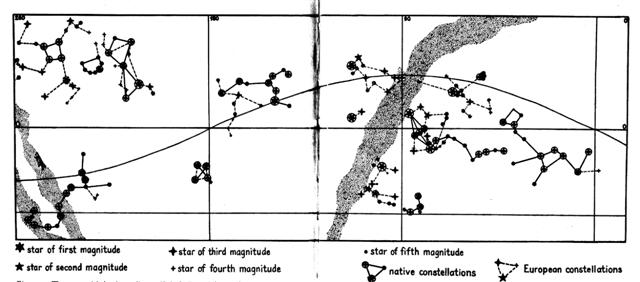 |
| CLOSE TO THE FULL MOON: |
| JAN 14 |
15 (380) |
(*301 = *118 + *183) |
17 |
| η Tucanae (363.0), ψ Pegasi (363.1), 32 Piscium (363.2), π Phoenicis (363.4), ε Tucanae (363.6), τ Phoenicis (363.9) |
θ Oct. (364.4) |
Al Fargh al Thāni-25 (Rear Spout)
0h (365.25)
CAPH (Hand) = β Cassiopeiae, SIRRAH (Navel of the Horse) = α Andromedae (0.5), ε Phoenicis, γ³ Oct. (0.8) |
Uttara Bhādrapadā-27 (2nd of the Blessed Feet) / Wall-14 (Porcupine)
ο Oct. (1.3), ALGENIB PEGASI = γ Pegasi (1.8) |
| March 19 (78) |
20 |
EQUINOX |
22 (*366) |
| °March 15 |
16 (*360) |
17 |
18 (77) |
| 'Febr 20 (*336) |
21 |
22 (53) |
TERMINALIA |
| "Febr 6 |
Tehetu'upú 7 (403) |
8 (*324) |
9 (40) |
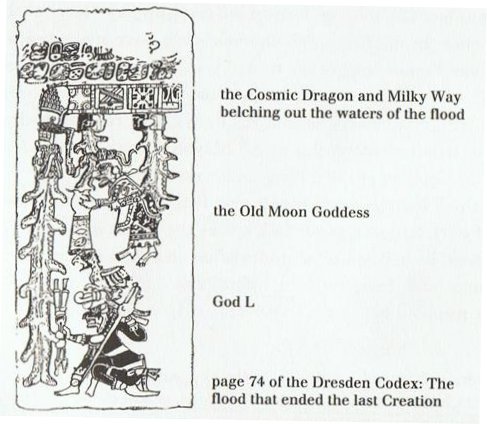 |
| JULY 19 (200) |
20 (*121 = *185 - *64) |
 |
 |
| Ga5-10 (120) |
Ga5-11 |
| PÁLIDA (Pale) = δ Crucis (184.6), MEGREZ (Root of the Tail) = δ Ursae Majoris (184.9) |
Hasta-13 (Hand) / Chariot-28 (Worm)
GIENAH (Wing) = γ Corvi (185.1), ε Muscae (185.2), ζ Crucis (185.4), ZANIAH (Corner) = η Virginis (185.9) |
| Sept 21 (*184) |
EQUINOX |
| °Sept 17 (*180) |
18 (261) |
| 'Aug 25 (*157) |
26 (238) |
| "Aug 11 (*143) |
Hora Iti 12 (224) |
| CLOSE TO THE FULL MOON: |
| JAN 18 |
19 (384) |
| χ Pegasi (2.1), θ Andromedae (2.7) |
σ Andromedae (3.0), ι Ceti (3.3), ζ Tucanae (3.5), ρ Andromedae, π Tucanae (3.7) |
| March 23 (82) |
24 (*368) |
| °March 19 (78) |
20 (*364) |
| 'Febr 24 (55) |
25 (*341) |
| "Febr 10 (41) |
Tehetu'upú 11 (*327) |
| JULY 21 |
7-22 (*123) |
23 |
24 |
25 (206) |
 |
 |
 |
 |
 |
| Ga5-12 |
Ga5-13 (123) |
Ga5-14 |
Ga5-15 |
Ga5-16 |
| CHANG SHA (Long Sand-bank) = ζ Corvi (186.3) |
INTROMETIDA (Inserted) = ε Crucis (187.4), ACRUX = α Crucis (187.5) |
γ Com. Berenicis (188.0), σ Centauri (188.1), ALGORAB = δ Corvi (188.5), GACRUX = γ Crucis (188.7) |
γ Muscae (189.0), AVIS SATYRA (Bird of the Satyrs) = η Corvi (189.3), ASTERION (Starry) = β Canum Ven. (189.5), KRAZ = β Corvi, κ Draconis (189.7) |
α Muscae (190.2), τ Centauri (190.5), χ Virginis (190.7)
ALDERAMIN (α Cephei)
|
| Sept 23 |
24 (*187) |
25 (268) |
26 |
27 |
| °Sept 19 |
20 (*183) |
21 (264) |
EQUINOX |
23 |
| 'Aug 27 |
28 (240) |
29 (*161) |
30 |
31 |
| "Aug 13 |
14 (*146) |
Hora Iti 15 (227) |
16 |
17 |
 ... After the great flood had at long last receded, Raven had gorged himself on the delicacies left by the receding water, so for once, perhaps the first time in his life, he wasn't hungry. But his other appetites, his curiosity and the unquenchable itch to meddle and provoke things, to play tricks on the world and its creatures, these remained unsatisfied. Raven gazed up and down the beach. It was pretty, but lifeless. There was no one about to upset, or play tricks upon. Raven sighed. He crossed his wings behind him and strutted up and down the sand, his shiny head cocked, his sharp eyes and ears alert for any unusual sight or sound. The mountains and the sea, the sky now ablaze with the sun by day and the moon and stars he had placed there, it was all pretty, but lifeless. Finally Raven cried out to the empty sky with a loud exasperated cry. And before the echoes of his cry faded from the shore, he heard a muffled squeak. He looked up and down the beach for its source and saw nothing. He strutted back and and forth, once, twice, three times and still saw nothing. Then he spied a flash of white in the sand. There, half buried in the sand was a giant clamshell. As his shadow fell upon it, he heard another muffled squeak. Peering down into the opening between the halves of the shell, he saw it was full of tiny creatures, cowering in fear at his shadow ... |
| CLOSE TO THE FULL MOON: |
| JAN 20 |
21 (*306) |
22 |
23 (388) |
24 |
| no star listed (4) |
ANKAA = α Phoenicis, κ Phoenicis (5.0)
ALPHARD (α Hydrae)
|
λ Phoenicis (6.3), β Tucanae (6.4) |
ANDROMEDA GALAXY (M31), π Andromedae (7.7) |
ε Andromedae (8.2), DELTA = δ Andromedae (8.4), SCHEDIR (Breast) = α Cassiopeiae (8.6), ζ Andromedae, μ Phoenicis (8.9) |
| March 25 (84) |
26 |
27 |
28 (*372) |
29 (*8) |
| 0h |
°March 22 |
23 |
24 (*368) |
25 (*4) |
| 'Febr 26 |
27 |
28 (59) |
'March 1 |
2 (*346) |
| "Febr 12 |
13 (*329) |
2-14 (45) |
15 |
Tehetu'upú 16 |
| JULY 26 |
27 |
28 |
29 (210) |
30 (*131) |
 |
 |
 |
 |
 |
| Ga5-17 |
Ga5-18 (128) |
Ga5-19 |
Ga5-20 |
Ga5-21 |
|
Al Áwwā'-11 (The Barker) / Shur-mahrū-shirū-18 (Front or West Shur)
Sombrero Galaxy = M104 Virginis (191.1), ρ Virginis (191.4), PORRIMA = γ Virginis, γ Centauri (191.5) |
ι Crucis (192.2), β Muscae (192.5), MIMOSA = β Crucis (192.9) |
no star listed (193) |
κ Crucis (194.4), ψ Virginis (194.5), μ Crucis, λ Crucis (194.6), ALIOTH (Fat Tail) = ε Ursae Majoris, ι Oct. (194.8) |
MINELAUVA = δ Virginis (195.1), COR CAROLI = α Canum Ven. (195.3) |
| Sept 28 |
29 (*192) |
30 (273) |
Oct 1 |
2 |
| °Sept 24 |
25 (*188) |
26 |
27 (270) |
28 |
| 'Sept 1 |
2 (*165) |
3 |
4 |
5 (248) |
| "Aug 18 (*150) |
19 (231) |
20 |
Hora Iti 21 |
22 |
| CLOSE TO THE FULL MOON: |
| JAN 25 |
26 |
27 (392) |
28 |
29 (*314) |
| ξ Phoenicis (9.0), ρ Tucanae (9.1), DENEB KAITOS (Tail of the Sea Beast) = β Ceti, η Phoenicis (9.4), AL NITHĀM (String of Pearls) = φ¹ Ceti (9.6) |
ACHIRD (Woman with Luminous Rays) = η Cassiopeiae (10.7) |
Legs-15 (Wolf)
ν Andromedae (11.0), φ² Ceti (11.1), ρ Phoenicis (11.2), η Andromedae (11.4) |
CIH (Whip) = γ Cassiopeiae, λ Tucanae (12.4), φ³ Ceti (12.6), μ Andromedae (12.8) *12.4 + *365 -*41.4 = *336 (= 4 * 84) |
φ4 Ceti (13.2) |
| March 30 |
31 (*375) |
April 1 (91) |
2 |
3 |
| °March 26 |
27 |
28 (*372) |
29 (88) |
30 |
| 'March 3 |
4 |
5 (64) |
6 (*350) |
7 |
| "Febr 17 |
18 |
19 (50) |
20 (*336) |
Tehetu'upú 21 |
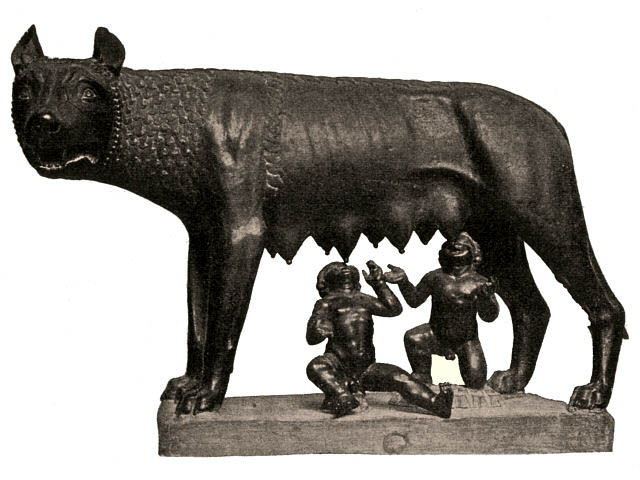 |
| JULY 31 |
AUG 1 |
2 (214) |
3 (*500) |
4 (*136) |
5 |
6 |
 |
 |
 |
 |
 |
 |
 |
| Ga5-22 |
Ga5-23 |
Ga5-24 |
Ga5-25 (135) |
Ga5-26 |
Ga5-27 (→ 364) |
Ga5-28 |
| δ Muscae (196.5) , VINDEMIATRIX (Grape Gatherer) = ε Virginis (196.8) |
13h (197.8) ξ¹ Centauri (197.1), ξ² Centauri (197.9) |
APAMI-ATSA (Child of Waters) = θ Virginis, ψ Hydrae (198.5), DIADEM = α Com. Ber. (198.9) |
AL DAFĪRAH (Tuft) = β Com. Ber. (199.4) |
σ Virginis (200.4) |
γ Hydrae (201.0), ι Centauri (201.4) |
Al Simāk-12 (Lofty) / Chitra-14 (Bright One) / Horn-1 (Crocodile) / Sa-Sha-Shirū-20 (Virgin's Girdle) / ANA-ROTO-3 (Middle pillar) MIZAR = ζ Ursae Majoris (202.4), SPICA = α Virginis, ALCOR = 80 Ursae Majoris (202.7)
SADALMELIK (α Aquarii)
*161 = *202.4 - 41.4 |
| Oct 3 |
4 |
5 |
6 |
7 (*200) |
8 |
9 (282) |
| °Sept 30 |
°Oct 1 |
2 |
3 (275) |
4 (*196) |
5 |
6 |
| 'Sept 6 |
7 (250) |
8 |
9 |
10 |
11 |
12 (*175) |
| "Aug 23 |
24 (236) |
25 |
Hora Iti 26 |
27 |
28 |
Hora Iti 29 |
|
Ahu. 1. Funerary monument with niches holding the skeletons of the dead. 2. Generic term for a grave, a tomb merely enclosed with stones. 3. Stone platform, with or without graves. 4. Elevated seat, throne. 5. Swollen; to swell up: ku-ahu-á tooku va'e, my foot is swollen; ananake te raá e-tagi-era te ûka riva mo toona matu'a ka-ahu ahu-ró te mata, every day the daughter cried for her parents until her eyes were quite swollen. Vanaga.
1. To transfer, to transplant, to take up by the roots. 2. To puff up, to swell, a swelling, protuberance; gutu ahu, swollen lips; ahuahu, to swell, plump, elephantiasis, dropsy; ahuahu pupuhi, amplitude; manava ahuahu, indigestion. 3. Paralysis. 4. A carved god of dancing, brought forth only on rare occasions and held of great potency. Ahuahu, inflammation. Ahukarukaru (ahu 2 - karukaru), dropsy. Churchill. |
Ahu Akapu
(2 days) |
Aka. 1. Anchor: he-hoa te aka, to drop anchor. 2. Root of certain plants (banana tree, taro, sugar-cane). 3. To be paralyzed by surprise. Vanaga.
1. Root; aka totoro, to take root. P Pau., Mq.: aka, root. Ta.: aa, id. 2. (āka) anchor. 3. Causative (haka). Churchill. |
Pu Pakakina
(1 month) |
| CLOSE TO THE FULL MOON: |
| JAN 30 |
31 (396) |
FEBR 1 |
2 |
3 |
4 (*320) |
5 (36) |
| no star listed (14) |
1h (15.2) β Phoenicis (15.1), υ Phoenicis, ι Tu canae (15.6), η Ceti, ζ Phoenicis (15.7) |
Al Batn Al Hūt-26 (Belly of the Fish) / Revati-28 (Prosperous) / 1-iku (Field Measure)
MIRACH (Girdle) = β Andromedae, KEUN MAN MUN (Camp's South Gate) = φ Andromedae (16.0), ANUNITUM = τ Piscium (16.5),
REVATI (Abundant) = ζ Piscium (16.9)
REGULUS (α Leonis)
|
ν Phoenicis (17.4), κ Tucanae (17.6) |
no star listed (18) |
ADHIL (Garment's Train) = ξ Andromedae (19.3), θ Ceti (19.7) |
KSORA (Knee) = δ Cassiopeiae (20.1), ω Andromedae (20.6), γ Phoenicis (20.8) |
| April 4 |
5 (460 = 396 + 64) |
6 |
7 |
8 (13 * 29½ - ½) |
9 (*384) |
10 (100) |
| °March 31 |
°April 1 (91) |
2 (*377) |
3 |
4 |
5 (460 = 396 + 64) |
6 (*16) |
| 'March 8 |
9 |
10 (*354) |
11 |
12 |
13 (72) |
3-14 |
| Tehetu'upú 22 |
TERMINALIA |
"Febr 24 (420) |
25 |
26 |
27 (*7 * 7 * 7) |
28 (59) |
|
... The leap day was introduced as part of the Julian reform. The day following the Terminalia (February 23) was doubled, forming the bis sextum - literally 'double sixth', since February 24 was 'the sixth day before the Kalends of March' using Roman inclusive counting (March 1 was the 'first day'). Although exceptions exist, the first day of the bis sextum (February 24) was usually regarded as the intercalated or 'bissextile' day since the third century. February 29 came to be regarded as the leap day when the Roman system of numbering days was replaced by sequential numbering in the late Middle Ages ... |
| AUG 7 (219) |
8 (*140) |
 |
 |
| Ga5-29 |
Ga5-30 (140) |
| 71 VIRGINIS (203.6) |
no star listed (204) |
|
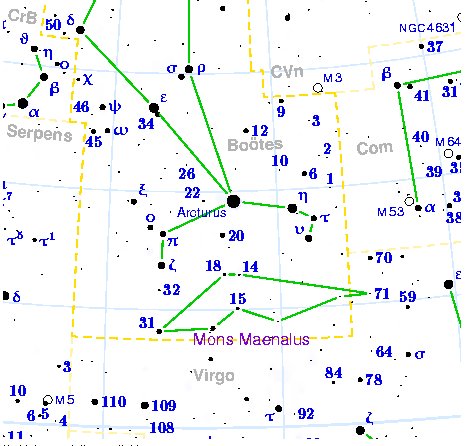
... Mons Maenalus, at the feet of Boötes, was formed by Hevelius, and published in his Firmamentum Sobiescianum; this title coinciding with those of neighboring stellar groups bearing Arcadian names. It is sometimes, although incorrectly, given as Mons Menelaus, - perhaps, as Smyth suggested, after the Alexandrian astronomer referred to by Ptolemy and Plutarch. The Germans know it as the Berg Menalus; and the Italians as Menalo. Landseer has a striking representation of the Husbandsman, as he styles Boötes, with sickle and staff, standing on this constellation figure. A possible explanation of its origin may be found in what Hewitt writes in his Essays on the Ruling Races of Prehistoric Times:
The Sun-god thence climbed up the mother-mountain of the Kushika race as the constellation Hercules, who is depicted in the old traditional pictorial astronomy as climbing painfully up the hill to reach the constellation of the Tortoise, now called Lyra, and thus attain the polar star Vega, which was the polar star from 10000 to 8000 B.C.
May not this modern companion constellation, Mons Maenalus, be from a recollection of this early Hindu conception of our Hercules transferred to the adjacent Bootes? |
| Oct 10 (101 + 183) |
11 (284) |
| °Oct 6 |
7 (280) |
| 'Sept 13 (256 = 242 + 14) |
14 (*177) |
| Hora Iti 30 (242) |
31 (*163) |
| CLOSE TO THE FULL MOON: |
| FEBR 6 (*322) |
7 (403 = 220 + 183) |
| δ Phoenicis (21.5) |
υ Andromedae (22.9) |
| April 11 (101) |
12 (*387) |
| °April 7 (97 = 101 - 4) |
8 (*383 = *387 - *4) |
| 'March 15 (74 = 101 - 27) |
16 (*360 = *387 - *27) |
| "March 1 (60 = 101 - 41) |
Tarahao 2 (*346 = *387 - *41) |
[E:32] They stayed, and another day dawned. Then Ira said, Let's go! Let's go down to swim with the board, to ride the waves! They all got up, climbed down, and arrived. They took off cape and loincloth (he huni e te hami). Then they all hurried and mounted the topside of a plank. They climbed on it, moved it, and reached the islets (motu, here, 'cliffs off the shore'). They all formed a line and looked towards the waves. When the wave began to rise, when it began to move faster and faster, they all turned the lower part of their body (? tiaeve) and coasted on top of the wave toward the right side. Once they were underway (literally, 'when the turtle was gone'), their eyes looked toward the land at an angle. Ira called out with a loud voice, Our ride on the wave is to the right! (Fast) as on a sled was the ride on the wave, and it brought them to the shore. The place where they landed was given the name Hanga Roa.
They all turned around and went back (to the starting place out at sea). Then the ride on the waves went in the direction of the left side, and they landed in Apina Iti. [E:33] Again they all turned around and came back (to the starting point), and once again they rode in on the waves. They landed in Rio and gave the name Hanga O Rio.
They went on land, sat down, stretched out, and dried in the sun. Then they all went back again and arrived (out there), and once again they all rode on the waves toward the beach. Again and again (they did it). They went on land, turned around, and climbed up together to the cave Pu Pakakina. There they stayed.
The first day of swimming with the board (above) was probably in the first day after Hora Iti 29 ("August 29), the day when they went to Pu Pakakina A Ira. The last of the 5 turtle glyphs in line Ga5 was at Spica, Alcor, and Mizar. Possibly it meant the Explorers down on earth repeated what just had occurred up in the night sky.
[1] It grew light, and again Ira spoke. This is what he said: 'Turn around, all of you, and go down to ride the waves (literally, 'to the turtle, to act like a turtle').' Five of them went down; only Ira did not go down to let himself be carried on a board by a wave. After the young kinsmen had gone down to surf, Ira got up, picked up the mat with the treasure, unfolded the mat, pulled out the mother-of-pearl ornament (reipa), folded the mat again tightly, and left it on the ground. Ira got up, climbed up, went on, and reached Ruhi Hepii. He drilled a hole into the stone. After the hole was deep enough, he took the ornament (rei) and put it into the hole so that the shiny side (rapa) was turned outward. He gave the place the name 'Ruhi Hepii'. He turned around, climbed down, went on, and entered the cave Pu Pakakina. When he arrived there, he sat down. The young kinsmen arrived and rested.
[2] It grew light. On the second day, Ira said again, 'Go back to riding the waves!' They all went back out there. [In order to count this day as number 2 we cannot count the earlier mentioned 'another day dawned' as the same kind of day. Therefore 'another day dawned' could possibly refer to the 'dawn of the year'. This special 'day' is similar to the year before the first birthday. When a great cog in the wheel of time moves one step ahead all the smaller cogs should stand still.] Ira got up and again picked up the (second) ornament. He took it, went on, came to Apina Nui, drilled a hole into the stone, put the ornament in the hole, with the shiny side to the outside, and gave (the place) the name 'Pu'. He turned around, went on, and came to the cave Pu Pakakina. There he lay down. The young kinsmen arrived and also lay down.
[3] It grew light on the third day, and again Ira said, 'Go back to swimming on a board, to riding the waves!' All went back out there, and Ira got up. He picked up two stone figures (moai maea) and two mother-of-pearl necklaces (tuitui reipa). The name of the first stone figure was Apina Iti, and the second one was Rapa Kura. Ira took the figures and the ornaments, went on, and came to Apina Iti. He dug a pit, let the figure slide down into the pit, and covered it up with pebbles (kirikiri). The head remained completely free (? he puoko i hakapaka). He put the necklace around the neck of the figure and called the place 'Apina Iti A Rapa Kura'. Ira gave the stone figure [earlier named Apina Iti] the name 'Hinariru', the name of the master, (son) of Tuu Hokorua, who had given the figure to Ira. He turned around, went on, and entered the cave Pu Pakakina and remained there. All the young men arrived and settled down (to sleep).
[4] It grew light on the fourth day, and they all got up (together). They climbed down, went on, and arrived at the bay. They hurried, went into the water, and reached the islet (off the shore). The wave began to move, and they all rode the wave (literally, 'they turned their lower body into the position of a turtle'). Ira rode the waves toward the right side. He looked diagonally toward the land, looked in the direction of Ruhi Hepii, and the ornament of Ruhu Hepii shone brightly. [I suspected Ruhu was Barthel's misspelling of Ruhi and looked in the Polynesian original. To my surprise - I guess Barthel could have used Ruhu as a Sign - the original text seems to be: he ui mai a ruhi hepii he rapa atu te rei.mai ruhi hePii. Possibly we should read hePii as a reference to π.]
He went back out into the sea, and the movement of the wave was to the left side. Again he glanced, this time in the direction of Pu, and the ornament of Pu shone brightly. [Pu was the name of the place with a hole in the stone at Apina Nui. Maybe Pi(i) was meant to be the opposite of Pu, as when right is contrasted with left.] Again he went out into the sea. From the middle, the two necklaces around the neck of the two figurines shone (toward him). His ride on the wave ended in Rio, and therefore the name 'Hanga O Rio' was given. [There were 2 necklaces, but the story recounts only how one of them was used around the neck of the stone figure Apina Iti. The other stone figure was Rapa Kura and nothing is said if also this figure was buried up to her neck or not. Instead the name of the Apina Iti figure was strangely changed to Apina Iti A Rapa Kura. If Barthel has translated the story correct, then it contains puzzles to solve. Was the Apina Iti statue joined to the Rapa Kura statue when he got the necklace around his neck? But then the name changed again, this time to Hinariru, the son of Tuu Hokorua, where indeed the latter name is in harmony with my question - 'in a group of two'.] Ira remained on shore, pondered, and said, 'This is well done! Ruhi to the right, Pu to the left, and Hinariru Nui and Hinariru Iti in the middle.'
The name ruhi hePii could have referred to the summer maid, in which case we can assume Pu (at Apina Nui) should represent the winter maid:
... Antares, visible in the morning sky of December-January, came to stand for summer heat; hence the saying, 'Rehua cooks (ripens) all fruit'. The generally accepted version of the Rehua myth, according to Best, is that Rehua had two wives, the stars on either side of Antares. One was Ruhi-te-rangi or Pekehawani, the personification of summer languor (ruhi), the other Whaka-onge-kai, She-who-makes-food-scarce before the new crops can be harvested ...
... Hamiora Pio once spoke as follows to the writer: 'Friend! Let me tell of the offspring of Tangaroa-akiukiu, whose two daughters were Hine-raumati (the Summer Maid - personified form of summer) and Hine-takurua (the Winter Maid - personification of winter), both of whom where taken to wife by the sun ... Now, these women had different homes. Hine-takurua lived with her elder Tangaroa (a sea being - origin and personified form of fish). Her labours were connected with Tangaroa - that is, with fish. Hine-raumati dwelt on land, where she cultivated food products, and attended to the taking of game and forest products, all such things connected with Tane ...

On this topographic map the cape which nowadays has been named Apina Iti was Pta Roa (in contrast to Hanga Roa).
| Roa. Long: haga roa, long bay, wide beach; ara roa râkei, wide, neat path. Roaroa, long, tall, far, distant: tagata roaroa, tall man; kaiga roaroa, distant land; roaroa tahaga, middle finger. Vanaga. Long, large, extent; roaroa, to grow, height; mea roaroa, a long while; roaroa tahaga, middle finger; roaroa ke, infinite (time and space); roroa, far, distant, thin, to grow tall; tagata roroa, giant; roroa ke, immense; arero roroa, to rapport, to tell; vanaga roroa, to chatter, babbler; vare roroa, driveller; hakaroa, to lengthen, to defer; hakaroaroa, to lengthen, to develop; hakaroroa, to extend, prolong, defer, lengthen; roaga, distance, extent, size, length, distant, long. Churchill. The Maori used the same word for both solstices, marua-roa, 'long pit', and applied the term also to the month or season during which the Sun passed through its most northerly or southerly declination. A qualifying word such as takurua, 'winter', or o-rongo-nui, 'summer', was usually appended to denote which solstice was meant. When no explanatory word was added marua-roa seems to have signified the winter solstice... Makemson. |
| One. Sand. Oneone (reduplication of oone which see below), dirty, covered in soil, in mud. Vanaga. Oone, ground, soil; mud; dirty, to get dirty. Vanaga. One, sword. (Cf. oe, dorsal fin; àè, sword.) Ta.: óé, sword, lance. Churchill. Oone, sand, clay, dirt, soil, mire, mud, muck, gravel, filth, manure, dust, to dirty; ao oone, shovel; egu oone vehuvehu, mud; moo te oone, shovel; oone hekaheka, mud; puo ei oone, to daub; kerihaga oone, husbandman; oone veriveri, mud; oone no, muck, to dirty, to powder; vai oone, roiled water; oone rari, marsh, swamp; oonea, dirty T; ooneoone, sandy; oonevai, clay T; hakaoone, to pollute, to soil. P Mgv.: one, land in general, earth, soil. Mq.: one, sand, beach. Ta.: one, sand, dust, gravel. Churchill. Miro-oone, model boat made of earth in which the 'boat festivals' used to be celebrated. Vanaga. ... on the first day of the year the natives dress in navy uniforms and perform exercises which imitate the maneuvers of ships' crews ... Métraux. |
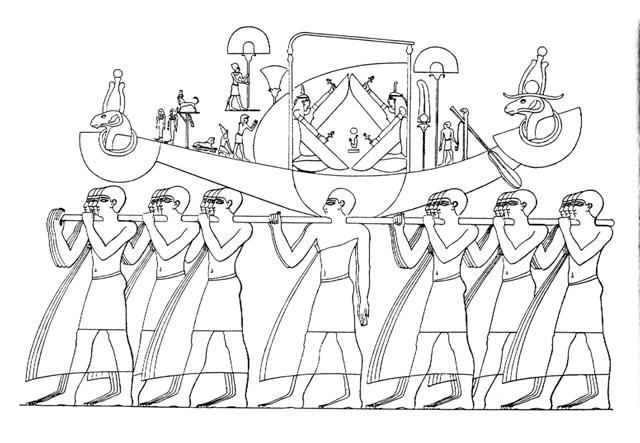
|
















